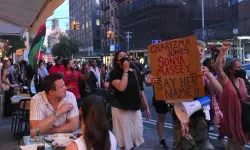The municipality of Amsterdam plans to open close to 100 places for sex workers in the newly designated location after the closure of the Red Lantern neighborhood.
The European Medicines Agency (EMA) has expressed "great concern" about the Amsterdam municipality's decision to build a large brothel near its headquarters in Amsterdam.
The local government in Amsterdam aims to relocate the "Red Light District", where the prostitution industry operates, in order to combat organized crime in the city and prevent overcrowding in the area.
The local government's choice of Europa Boulevard in the south of the capital as the new area for this purpose caused the reaction of the EU EMA management operating here.
The local government's decision will be voted on by the city council early next year.
Reacting to the municipality's decision, EMA stated that the proposed location for the "erotic center" is in the immediate vicinity of its own facilities and that it is "deeply concerned" about the impact of this decision on the environment.
The proposed new brothel is only 800 meters away from the EMA headquarters.
The European Medicines Agency (EMA) moved its headquarters to Amsterdam, the capital of the Netherlands, after Brexit.
Red Lantern workers against the relocation of the historic brothel
Sex workers working in brothels also react against the relocation of the Red Lantern Neighborhood.
People living in these areas also oppose the brothel, which is wanted to be moved to a place far from the center of the capital.
After the closure of the Red Lantern neighborhood, the Amsterdam local government plans to build around 100 houses for prostitutes in the newly designated area.
Even if this project is approved, a series of official decisions will be needed to fully develop the plans.
The municipality plans to build the new 'gigantic erotic center' over a period of seven years.
Opponents of the project have already collected tens of thousands of signatures.













